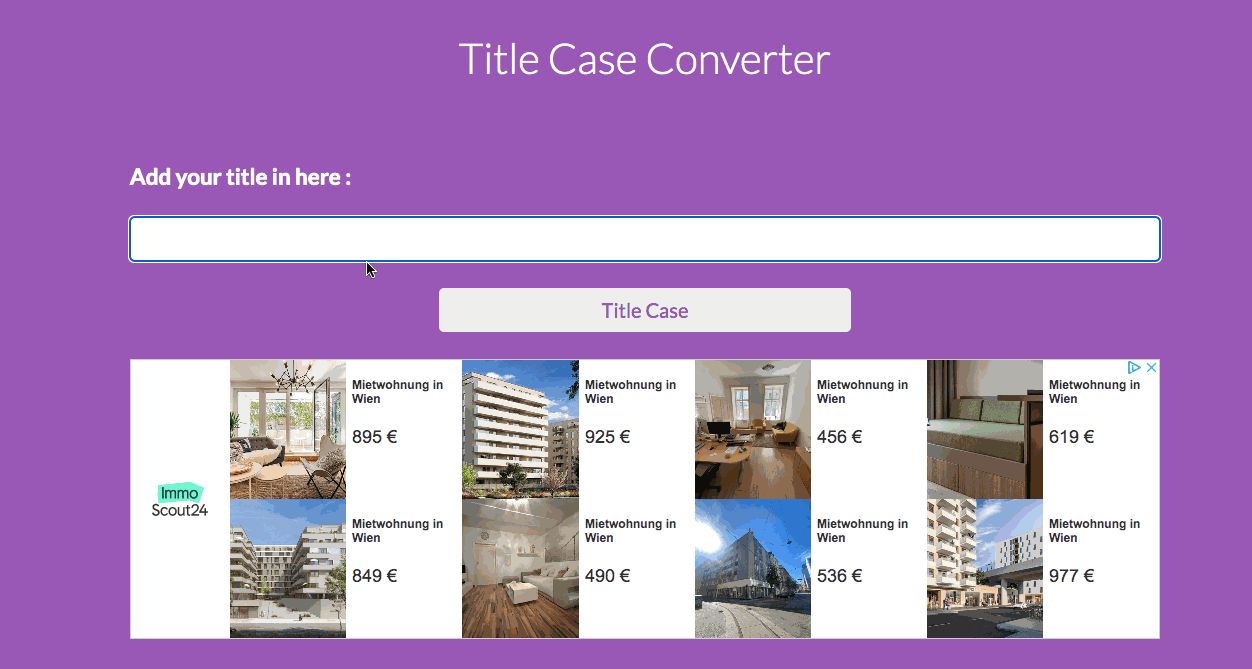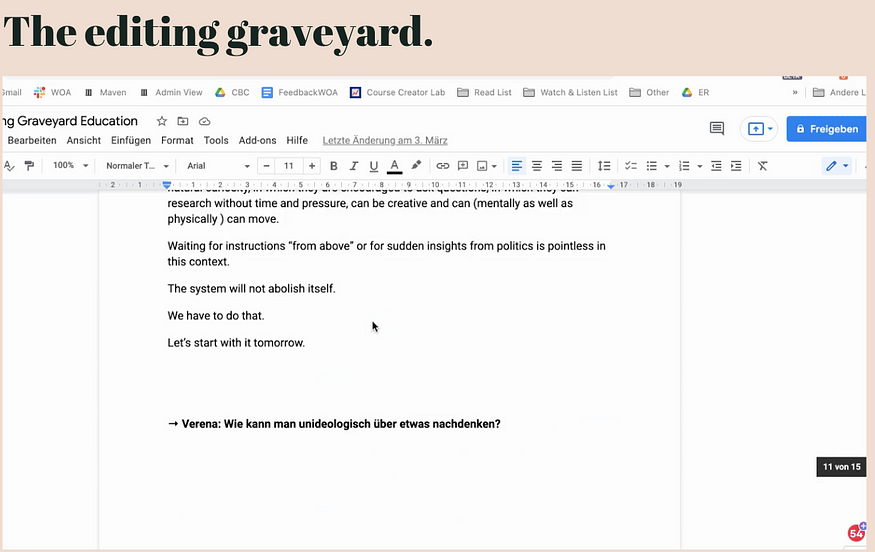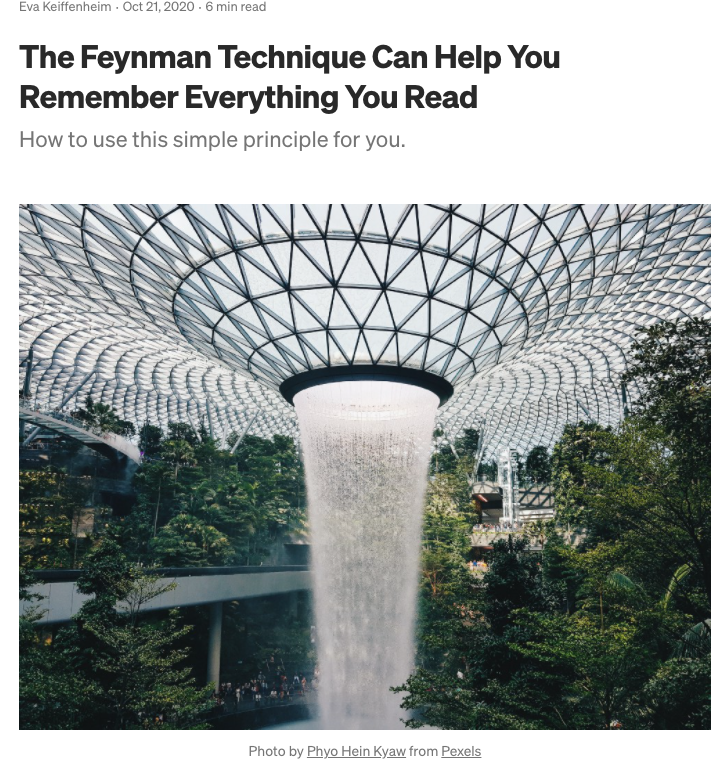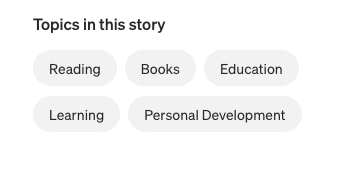A clear blueprint to improve your writing.

Have you ever spent hours editing your article, wondering when it’s finally good enough?
Most writers forget the opportunity cost of editing. The more time you spend editing your article, the later you start writing a new one.
I used to try to make my work perfect. I spent 10+ hours editing. In the end, I had an average article with a few hundred views. With that time, I could’ve written at least three new articles.
You can think of every new article you publish as a lottery ticket. The more you have, the more chance you have to go viral or semi-viral with some of them. And this matters because you need more exposure if you want to build an audience.
Fast way forward, and I have a structure that helps me know my articles are “good enough” within 51 minutes. I follow these exact steps to edit my articles, and when I’m done, I hit publish.
My work will never be perfect. But it’s good, and I can publish more.
Here’s my bulletproof editing process you can follow to save hours of work.
1. You’ll need to pay attention to this (1 min)
If you’d like to get curation on this platform, you have to use the title case format in your headings.
Format your titles with this free app every time you edit your work. Your maximum time investment for this step is 1 min.

2. Be the reader of your work (30 mins)
To put yourself in the reader’s role, read out loud what you’ve written. This way you’ll be able to spot inconsistencies in the flow of your work.
I know it sounds strange. My husband used to laugh at me when I was reading my articles loud at 7 am.
You might feel awkward about listening to your own voice. Maybe you’re insecure about your pronunciation, or don’t want the people around you to hear what you’re working on. It’s indeed hard to push your limits and start doing this exercise, but it’s powerful and will immensely help you.
Delete here everything you don’t need.
Helpful questions you can think about to make your work easier:
- Do I repeat something? The shorter the better.
- Does my logic make sense?
- Is it reasonable for anyone looking at the evidence I’ve provided to come to the conclusion I’ve come to?
- Is each paragraph/section directly related to the one that comes before it and the one that comes after it? If not, are they separated by a header or divider?
- Does each paragraph’s opening sentence logically follow the previous sentence’s closing paragraph?
Push yourself to spend no more than 30 minutes on this step. Read your work only once.
This is the most challenging step of the whole editing process, and you might feel frustrated about deleting parts of your article that are close to you. To make this easier, I have my “editing graveyard.” It’s a document where I paste sentences and paragraphs I’d otherwise delete.

3. Section headings are just like your headline (5 mins)
After you’ve read out loud your work for fluency and clarity, it’s time to take a look at your section headings and improve them.
To hook your readers in, it’s not enough to write great headlines.
Think about each of your section headings as mini titles. You still need to convince your readers that it’s worth their time to keep on reading.
In this part, for example, I could’ve just written: “Improve your section headings.” Instead, I opted for “Section headings are just like your headline” to make the title more engaging.
You can make your section headings more interesting by:
- Using power words
- Relying on metaphors
- Implementing 1–2 of the six headline qualities
In a nutshell, great headlines:
- Focus on the readers and deliver some benefit — If You Want to Be Rich, Spend Your Time Buying Assets
- Are broad enough to attract a large audience — 9 Micro-Habits That Will Completely Change Your Life in a Year
- Enable the reader to share it with others because the article either makes them look smart or helpful — The 7 Emails You Should Send Every Week to Get Ahead in Your Career
- Bring some novelty in your point of view — Self-improvement has made me worse
- Display either famous people or self-proof — Elon Musk’s 2 Rules For Learning Anything Faster
- Evoke emotions — Today I Learned Something About My Boyfriend That No Girl Should Ever Have to Discover)
4. Polish your word choice (4 mins)
The rule of thumb of online writing is: the simpler, the better.
You can unclutter your writing by thinking of these rules:
- Active voice instead of passive
- Delete the word “that” 90% of the time
- Cut adverbs
- Simpler words and no jargon
- Cut the fluff
To master polishing your word choice, I use this article as a checklist. If you’ve done it a couple of times, you no longer need the article and do it by heart.
Don’t get lost in the details.
Every minute you spend editing, you don’t spend writing.
5. Don’t worry if you aren’t a native (5 mins)
My first language is German. In school, I was a below-average language student. When I started writing I worried my English language skills weren’t good enough to write online.
The thing is, there are countless tools non-natives can rely on to write with flawless grammar. I opted for Grammarly.
The tool improves your writing and helps you learn grammar along the way. I use the paid version, but you can do a lot with the free version already.
You can integrate the free version of the tool into your browser as follows:
First, you want to sign-up.

Second, add the extension to the browser:

Third, enable writing suggestions for the platform where you write

After integrating Grammarly into your browser, go through your text and implement the grammar suggestions. Focus on the correctness category (the red one) and ignore the app’s clarity, engagement, and delivery functions.
Not being a native can also bring benefits. You won’t fall into the trap of crafting fluffy sentences and using overly sophisticated words.
6. Follow the formatting guidelines (5 mins)
Most platforms have some formatting requirements.
Wherever you write, make sure to inform yourself about the formatting rules. You can either do this by observing the pieces and discovering similarities. Or look for the requirements either on the about page, in the submission guidelines, or the FAQ section.
Here’s what you need to pay attention to on this platform. You can read the bullets below or download this cheat sheet as a PDF to always get the formatting right.
Headline Optimization
- Is your headline appealing enough? Does it make the reader click?
- Your reader will always consider, “What’s in it for me in the article?
- Use “You” instead of “I.”
- No exclamation marks.
- All initial letters are BIG.
- Numbers are numerals: “5” instead of “Five”
Subtitle Optimization
- Always write a subtitle. It can impress your readers and make them click on your story.
The picture
- Always use an attractive picture as a heading.
- Make sure it’s a high-quality picture, and you have the right to use it + mentioned the source/owner of the picture.
- Use horizontal pictures — no vertical photos!
- Don’t choose the smallest option for images — go for the bigger ones.

Section breaks
Make use of section breaks to divide your post into sub-paragraphs.
Use subtitles
Use T1 and T2 title formatting to properly structure your text.
Use short paragraphs
Short paragraphs ensure a better reading experience. They help you to have more white space in your text, which is also a benefit for the reader.
Quotes
When using quotes, make sure you use the right quote formatting.
The end
Tell your reader what to do or why your post is relevant at the end of your article.
Call-to-Action (CTA)
To build your email list and grow your audience, include a CTA at the end of each post.
For example, the CTA of this article is: Ready to accelerate your writing journey and build an online audience? Subscribe for a free 5-day course on how you can set up the single most important thing writers usually forget to attract a large audience online. With a total time investment of only 20 minutes.
Tags
- Always use the five tags.
- Use a mixture of more & less popular tags that represent the topic of your article.
- Don’t go too niche, and don’t invent your own tags!
- If your goal is to become a Top Writer on Medium, make sure to use the same tags several times but keep in mind: the tag still. has to be a match for the story.

Now You
After you finish writing your next article, set a timer to 51 minutes. Try to complete all six editing steps in one go.
Push yourself to read your work only once in each step. It’s hard, but if you’d like to publish more articles, you have to learn to work faster.
The more you’ll practice this, the easier it’ll get.
Before you leave
Now you have a bulletproof editing process you can rely on every time you write an article.
To refresh your memory, these are the steps you’ll want to follow:
- Format title in title case (1 min)
- Read out loud for fluency & clarity (30 min)
- Improve your section headings (5 min)
- Polish your word choice (5 min)
- Grammarly check (5 min)
- Formatting check (5 min)
But your most important takeaway should be to not edit for hours.
Perfectionism in editing can kill your creativity and consistency. It also comes with opportunity costs: the longer you edit an article, the later you’ll start writing a new one.
If you’d like to be a successful online writer, it’s not enough to make people read your work. You need to break free from platforms and build your community.
Ready to accelerate your writing journey and build an online audience?
Subscribe for a free 5-day course on how you can set up the single most important thing writers usually forget to attract a large audience online. With a total time investment of only 20 minutes.